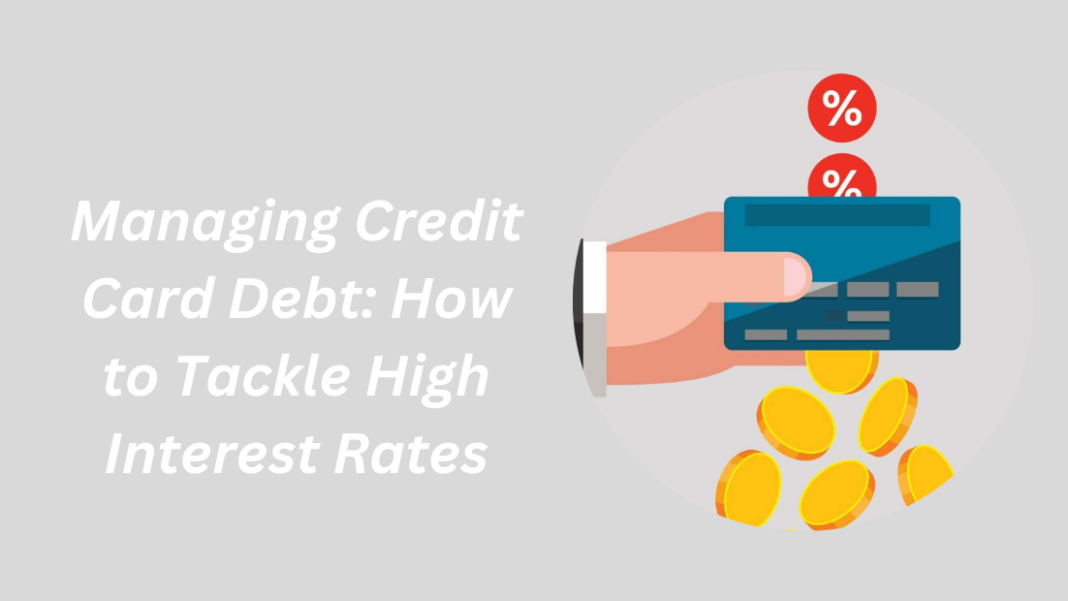Table of Contents
Managing Credit Card Debt: How to Tackle High Interest Rates
Credit cards have become an essential part of modern-day life, with people using them to buy everyday essentials, travel, or make luxury purchases. However, credit card debt can be a cause of significant financial stress for many individuals. With high-interest rates on the balance, it can create a vicious cycle of debt, which can be challenging to break. In this article, we will discuss how credit card interest rates work and what you can do to tackle high-interest rates.
Understanding Credit Card Interest Rates
The interest rate on your credit card determines how much you’ll pay for any balance you carry over to the next month. If you pay off your balance entirely within the grace period (typically 25 to 30 days), you won’t be charged any interest. However, if you carry a balance, interest will start to accrue on the outstanding amount. The longer you take to pay off the balance, the more interest you’ll accrue.
Credit card companies calculate interest in two ways: daily balance method and average daily balance method. With the daily balance method, interest is calculated daily based on the outstanding balance. So, for example, if you have a balance of $1,000 and an interest rate of 20%, your daily interest would be approximately $0.55. The average daily balance method takes into account the average balance over the billing cycle, which includes any new purchases and payments made during that period.
Credit card interest rates are variable, meaning they can change at any time. Federal Reserve sets the benchmark interest rate known as the federal funds rate, which affects the interest rate on credit cards. When the federal funds rate rises, credit card interest rates typically go up too, and when it falls, credit card rates go down. Credit card companies also have the power to change your interest rate if your credit score drops, you miss a payment, or if they change their policy.
What is the Average Credit Card Interest Rate?
The average credit card interest rate is around 16%, but that number can vary depending on the type of card and the borrower’s creditworthiness. If you have a good credit score (usually considered as 700 or above), you are more likely to get a lower interest rate. However, if you have a poor credit score (usually 600 or lower), you may be charged a higher interest rate, at times in excess of 20%. Students and people with no credit history might have to pay even higher interest rates.
How to Tackle High-Interest Rates on Your Credit Card?
High credit card interest rates can be a significant obstacle to paying off your debt. Here are some tips to help you tackle those high rates and get out of debt:
-
Negotiate with Your Credit Card Company
If you have a good payment history, you might have more leverage to negotiate with your credit card company. Call your credit card company and ask whether they would be willing to reduce your interest rate. Survey shows that 69% of people who asked were successful in getting a lower interest rate.
-
Consider a Balance Transfer
A balance transfer involves transferring the balance from one high-interest credit card to a new card with a lower interest rate. Many credit cards offer a 0% APR balance transfer for a specified period, which can help you pay off your debt faster without incurring additional interest charges. However, keep in mind that most balance transfers come with a fee of 3-5% of the balance transferred, so be sure to factor that into your calculations.
-
Pay More Than the Minimum Payment
If you only pay the minimum payment, it will take you much longer to pay off your balance and you’ll end up paying more in interest over time. Aim to pay more than the minimum payment, so you can make a more significant dent in your balance every month.
-
Create a Budget
Creating a budget is one of the most effective ways to manage credit card debt. Take a look at your expenses and income and create a budget that works for you. Allocate a portion of your income towards paying off your credit card debt. The more you can pay now, the less you’ll owe in interest later.
-
Cut Back on Expenses
To find more funds to pay off your credit card debt, consider cutting back on discretionary expenses. Identify any areas where you can reduce spending, such as entertainment or dining out, and redirect that money towards your debt payments.
-
Seek Professional Help
If you’re struggling to pay off your credit card debt, consider seeking professional help. A credit counseling agency can work with you to create a debt management plan and negotiate with your creditors to lower your interest rates. However, make sure that the credit counseling agency is reputable and authorized to provide such services.
Conclusion
High credit card interest rates can be a significant obstacle to paying off your credit card debt. You should take steps to manage your credit card debt and pay it off as soon as possible. By creating a budget, cutting back on expenses, seeking professional help if needed, and adopting smart strategies like negotiating with your credit card issuer, making more than the minimum payment, and considering balance transfers, you can tackle high-interest rates and get on the path to debt-free living.
Read more at: https://generalinfothis.com/















